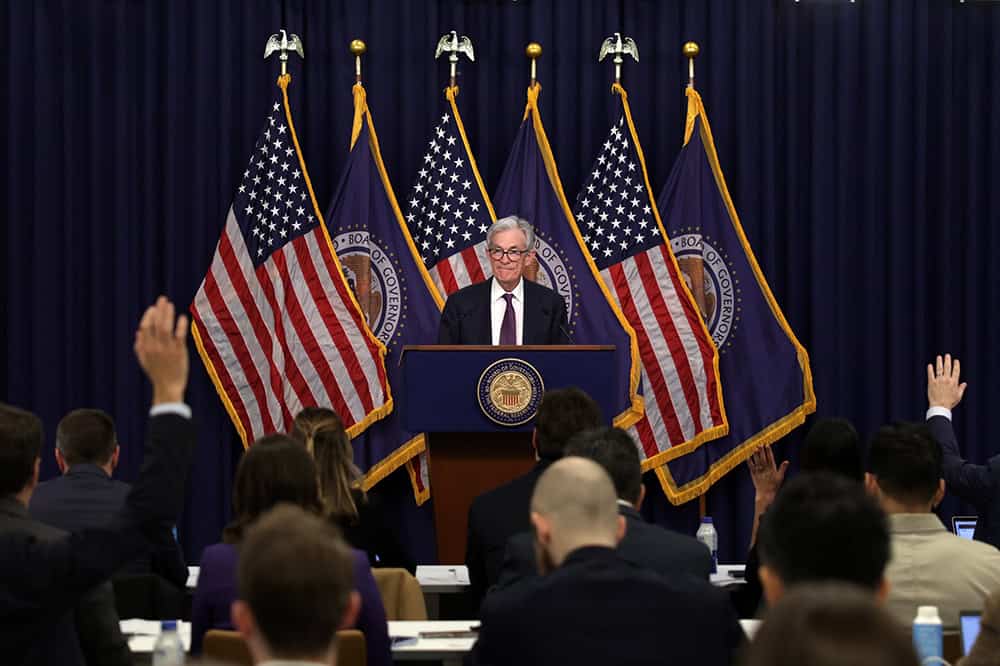Investment vs. Consumption: How Well are We Preparing for Our Future?
Last Updated June 7, 2021
The United States faces a range of complex challenges, including deteriorating infrastructure, a changing climate, and an inadequate education system. However, over the past 50 years, the share of the federal budget devoted to future-oriented investments has declined. At the same time, the national debt as a share of the economy has grown to its highest level since just after World War II, threatening our ability to provide the resources needed to build a sustainable and equitable economy for the next generation.
Recent federal proposals would provide significant new funding for investment to address national challenges, but many questions remain. This piece looks at how well we are investing in our future, including the difference between investment and consumption spending, historical trends in those areas, and what it means for our fiscal and economic outlook.
Federal Spending: Investment vs. Consumption
In a report on budgeting for federal investment, the Congressional Budget Office (CBO) distinguishes between investment and consumption:
- Investment generally refers to federal spending for public assets that provide benefits over a long period of time. Such spending includes physical assets such as infrastructure, buildings, or equipment; scientific research and development such as new cures for cancer and research on the changing climate; and education. Investment spending can be further broken out by defense and nondefense purposes. In 2019, 58 percent of total investment spending went to nondefense activities and 42 percent for defense activities.
- Consumption includes other forms of spending — most of which produce value for less than a year. Examples include spending on retirement benefits or nutrition assistance because those goods and services are typically consumed promptly.
It is important to note that not every expenditure fits neatly into one category or the other. However, adopting the CBO distinction is helpful for historical comparisons and for exploring whether our country is pursuing the physical and intellectual tools that we will need to compete and thrive in the future.
Public Investment in our Future Has Fallen over the Last 50 years
Over time, the rapid growth of consumption spending has substantially diminished the portion of the federal budget dedicated to longer-term investment. In the 1960s, investment accounted for about 30 percent of federal spending; in 2019, prior to the COVID-19 pandemic, it was about 12 percent of federal spending.
In 2019, nondefense investment accounted for $306 billion, or about 7 percent of total federal spending. By comparison, that amount is:
- Less than one-third the cost of Social Security
- About half as much as Medicare spending
- Less than the government spent on paying interest on the national debt
At the same time, defense investment accounted for $219 billion, or about 5 percent of total federal spending, primarily for physical assets.
Funding for federal investment is almost all discretionary, meaning lawmakers revisit and decide spending amounts each year through the appropriations process. In contrast, consumption spending makes up a large part of what is known as mandatory spending, meaning that it is governed by provisions of permanent law that do not need to be considered annually. As a result, growth in mandatory spending for retirement programs and rising health costs — as well as mounting interest payments on the national debt — are likely to further squeeze spending categorized as investment. If current policies stay in place, mandatory programs and interest will make up 83 percent of federal spending by 2051 — and leave little room for much else.
Investment Tax Incentives
In addition to discretionary spending, the federal government promotes investment through various incentives in the tax code known as tax expenditures. In 2019, tax expenditures that supported investment totaled $190 billion, according to CBO. Such expenditures can take the form of credits, exclusions, deductions, or preferential rates that minimize tax liabilities for businesses and individuals. About 70 percent of tax expenditures categorized as investment stem from provisions that allow businesses to accelerate tax deductions for the depreciation of equipment. Legislation enacted in 2017 enables businesses to deduct 100 percent of investment in equipment through 2022.
Smaller sources of support include:
- Education and Training: Deductions for charitable donations to education institutions (20 percent of tax expenditures for investment).
- Research and Development: Credits for research activities (9 percent).
- Municipal Bonds: Exclusion from taxable income of interest on bonds issued by state and local governments (1 percent).
A Brief Spike in Investment
Federal spending on nondefense investments — especially education — spiked following the enactment of the American Recovery and Reinvestment Act (ARRA) in response to the 2007–2009 recession but declined through 2019. ARRA provided funding for significant increases in primary, secondary, and vocational education, including $40 billion in state stabilization funds to help avert education cuts. The policy also increased federal spending on Pell Grants and tuition tax credits, which are education awards made based on financial need. Recent COVID-related legislation similarly bolstered investment in education, though complete data is not yet available.
With regard to physical capital, ARRA also provided funding for transportation projects, energy and water infrastructure, and the modernization of federal buildings. Most of that funding was spent over the following few years.
The U.S. Lags in Infrastructure Quality
One way to gauge the cost of declining investment in our future is to look at the state of our nation’s infrastructure. According to the World Economic Forum, numerous countries now have better infrastructure than the United States. By not keeping up with the rest of the world, we are not only risking the safety and well-being of our population; we are putting our nation at a competitive disadvantage.
Looking Ahead
The Biden administration has proposed a $2.7 trillion package of legislation that would include new spending for long-term investment. Importantly, the administration has also proposed ways to pay for these priorities through changes to the tax code — though much remains to be seen as the legislative process unfolds.
The United States faces many critical challenges as well as an unsustainable long-term fiscal outlook. Addressing critical long-term challenges — from the environment to infrastructure to education — without securing our nation’s fiscal position only undermines our ability to actually achieve our goals. Unless our fiscal foundation is made more sustainable over time, we will not have the resources to make key investments in our future to ensure broad-based economic opportunity and security for the next generation.
Image credit: Photo by Drew Angerer/Getty Images
Further Reading
New CBO Projections Show Lower Short-Term Rates than Previously Expected — but Longer-Term Rates Will Rise
Understanding interest rate trends is critical to the nation’s fiscal outlook because they are a significant factor for interest costs within the budget.
The Fed Reduced the Short-Term Rate Again, but Interest Costs Remain High
High interest rates on U.S. Treasury securities increase the federal government’s borrowing costs.
National Debt a Critical Election Issue for Swing State Voters
More than 9-in-10 voters across seven key states say it’s important for candidates to have a plan for the debt.


